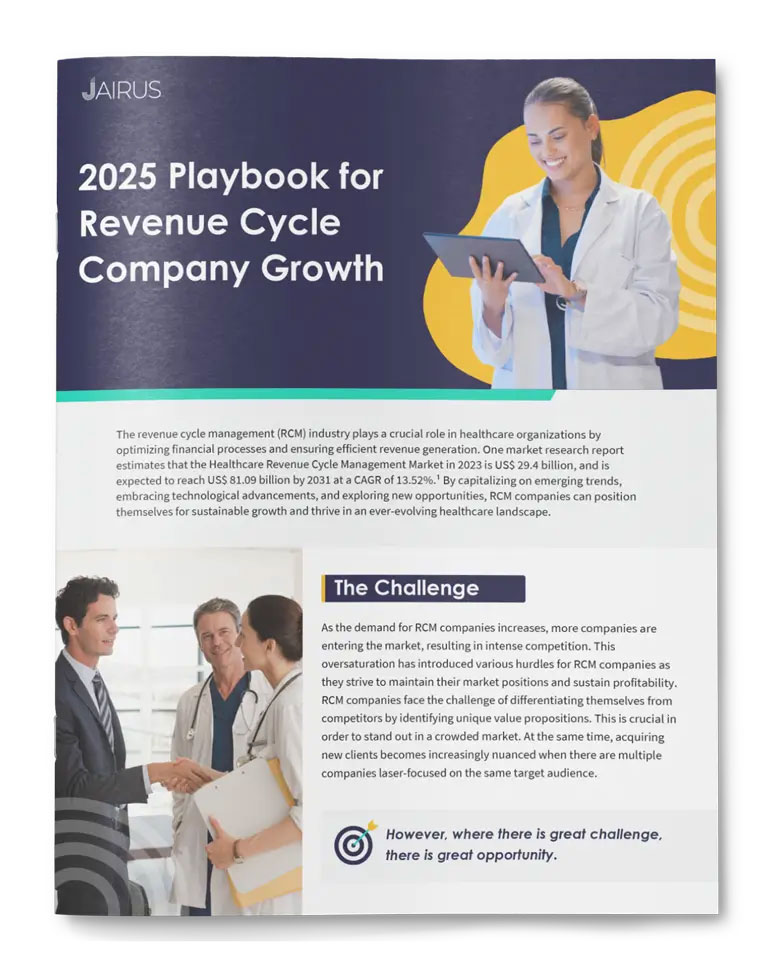MedTech companies are facing major roadblocks in generating demand for their new technologies. Gone are the days of catching doctors scrubbing in for surgery — and the endless sales opportunities that followed. In this new age of medtech sales, many are wondering if we will ever have the same access to decision-makers that we did before.
Even before COVID, there were forces at play limiting access to clinical decision-makers — the pandemic just sped up the process.
Those megatrends include:
- Physician employment by IDNs
- Vendor credentialing and other access-limiting efforts
- Professionalization of supply chain, including Value Analysis Committees
With so many factors curbing the adoption of new technologies, one question is consistently at the forefront of the minds of medtech companies concerning their marketing and sales efforts:
How do we get good sales opportunities in our current environment?
When finding new sales opportunities, the core aspects of prospecting remain the same: your target audience must have a pain point they would like addressed, and you must present your solution in a meaningful way that solves their issue. None of that has changed. What has changed is how you do those two things.
Before we get into the details, there are three things to remember:
- Prospects are still as interested as before — you need to get in front of them so they can act on that interest.
- Doctors are people, too. Like you and me, they spend much of their downtime on their phones. Name the social media platform, and you’ll find them there.
- Doctors always want to make their practices better, and they don’t turn it off at 5pm. Finding ways to leverage that fact will get your foot in the door with key decision-makers.
With all these things in mind, let’s look at how strategically using digital marketing strategies solves the problems created by the pandemic in the medtech industry.
Contextual Marketing
The first thing to do is define your target audience. The healthcare industry has a limited number of decision-makers in each specialty. Your task is to identify the key players who will champion the adoption of your product or service, down to the names, emails, and phone numbers of those people.
The next step is creating relevant and interesting content for your audience. Through a personalized marketing experience, you catch their attention and encourage engagement by appealing to the needs of their practices and patients. Content should be easily digestible, speak directly to their concerns, and promote further interaction with your company.
The “Surround Sound” Approach
Now that you have your content, present it to your target audience in a way that draws them to you without being too forceful. In other words: pull, don’t push.
An omnichannel approach finds clinicians where they are already online. Marketing on channels and social media platforms they use every day, such as Facebook or LinkedIn, generates a high frequency of touch with your content. Supplementing digital ad campaigns with email outreach ensures no prospect is left behind. Surrounding your audience with content holds their attention and encourages them to act. Campaigns should be consistent across platforms, with similar calls-to-action.
Measurable Success
A vital component of digital marketing is identifying strategies that worked — and those that failed to engage. Not only can you focus your efforts and resources more effectively, but you can also provide valuable information to your sales team. That way, when a salesperson prepares to contact a prospective client, they’ll know what led that prospect to request more information. Identifying what leads to success saves you time and money while filling your sales pipeline.
Although the landscape of healthcare marketing has dramatically shifted, digital marketing provides a new path forward that reopens doors to the easy access we had to decision-makers back in 1999.
Implement a successful digital outreach strategy. Jairus can help you create tactics that will generate better prospects and boost your sales cycle.


